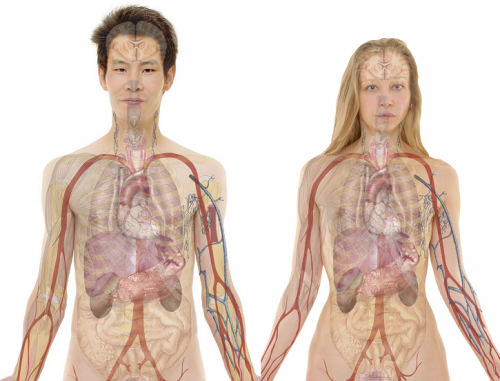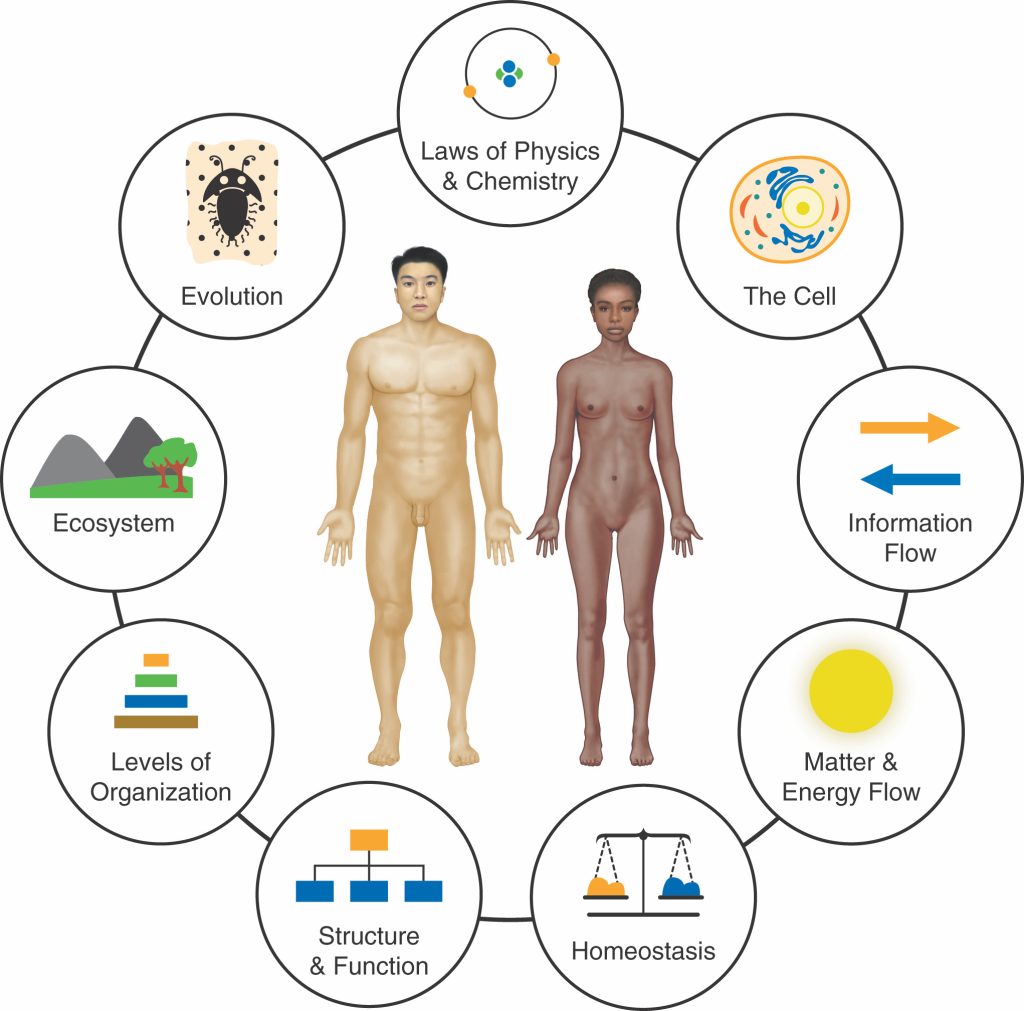An Introduction to Human Biology
Why Study Human Biology?
You probably have a general understanding of how your body works. Still, to truly understand the intricate functions of the human body and to dispel many misconceptions you have learned about your body over the years, you must approach the study of the body in an organized way.
This course will help you understand those intricacies and attack misconceptions head-on. It will expose you to the complex levels of organization inside the body and provide you with the information you need to delve deeply into the specific aspects of the body systems. This information will prepare you for the more complex topics you will encounter in future courses. There is some agreement among professionals about how to do this and what information must be standard across all Human Biology courses. These agreements are the “Big Picture.”

What is a Big Picture?
This course aims to teach you how the skills you are learning fit together in a meaningful big picture of Human Biology. The Big Picture will give you an organizational structure to learn the material.
The Big Picture explains why the material is being covered, as well as how the material is related or organized. The Big Picture also illustrates why you might want to invest time in learning this material and what it can do.
Big Picture Ideas in Human Biology
The Big Picture, Big Ideas, or core principles are all ways to describe the necessary concepts that make up a discipline. For Human Biology and Anatomy and Physiology, various groups have conducted research studies to determine the Big Ideas in this discipline.
They determined that the “Big Ideas in Human Biology” are:
- The processes that occur in living organisms follow the laws of physics and chemistry.
- The cell is the basic unit of life.
- Life requires information to flow within and between cells and between the environment and the organism.
- Living organisms must obtain matter and energy from the external world. Matter and energy are transformed and transferred in different ways to build the organism and perform work.
- Homeostasis (and “stability” in a more general sense) maintains the internal environment in a more or less constant state compatible with life even as the external environment changes.
- Understanding the functioning of the human body requires understanding the relationship between structure and function (at each and every level of organization).
- Living organisms carry out functions at many different levels of organization simultaneously (at the same time).
- All life exists within an ecosystem made up of the physiochemical and biological worlds.
- Evolution provides a scientific explanation for the history of life on Earth and the mechanisms through which changes to life have occurred.

[Credit: KnowledgeWorks Global Ltd., CC-BY 4.0.]
This text takes these Big Ideas and uses them to structure information about the biology of humans.
We intend for you to begin to think and speak in the language of biology while integrating the knowledge you gain about anatomy (structure) to support explanations of physiology (function). The course focuses on a few themes derived from the Big Ideas, which, when taken together, provide a complete view of what the human body is capable of and the exciting processes going on inside it. These organizational themes are:
- Structure and function of the body and the connection between the two
- Homeostasis, the body’s natural tendency to maintain a stable internal environment
- Levels of Organization, the major levels of organization in the human organism from the chemical, biochemical, and cellular levels to the tissues, organs, and organ systems
- Integration of Body Systems, the mechanisms by which the parts of each system support its common function, and the ways different systems work together.
You can see how these themes directly relate to the Big Ideas. As these themes describe the inner workings of each of the body’s organ systems, an integrated collection of organs that function together, those systems can be categorized based on their contribution to the specific vital functions needed for human life. These vital functions provide the context for the whole body and how each organ system plays a role in keeping us alive. We present information about each organ system according to the functions essential to the human body’s survival. The vital functions necessary for human life are:
- Exchange of materials with the environment
- Transport of materials within the body
- Structure, support, and movement
- Protection from the environment
- Control and regulation
All multicellular organisms need these vital functions to operate properly to survive. In addition to understanding the Themes and Vital Functions that help us organize our knowledge about the structure and function of the different body organ systems, knowing and using proper terminology related to body planes and directional terms will also help you in your quest to master Human Biology.
Body Systems
The introductory chapter will introduce you to all the body systems. In the Introduction to Systems section, you’ll see that we have grouped the organ systems according to the Vital Functions they perform. For example, the Digestive and Respiratory Systems are concerned with exchanging substances and information within the environment. In the following major sections of the book, except for Levels of Organization and Homeostasis, you will learn and explore each body system. Your instructor will determine the order in which you learn each system, but each system is described according to the Big Picture themes.
Body Planes, Words to Describe Regions of the Body, and Directional Terms
Another commonality across body types is the terms used to describe body planes, regions of the body, and directional terms. Health professionals must speak the same language about locating and identifying specific body parts and organs. Body planes, as well as regional and directional terms, are part of this common language. The imaginary vertical and horizontal planes run through the body, cutting it into parts. You will be introduced to this new “language” and given opportunities to practice using it in context. You will become comfortable locating and describing all organs and parts in the body and their relation to each other. Everything you learn after this section will use this terminology to help you visualize, identify, and locate anatomical structures.
